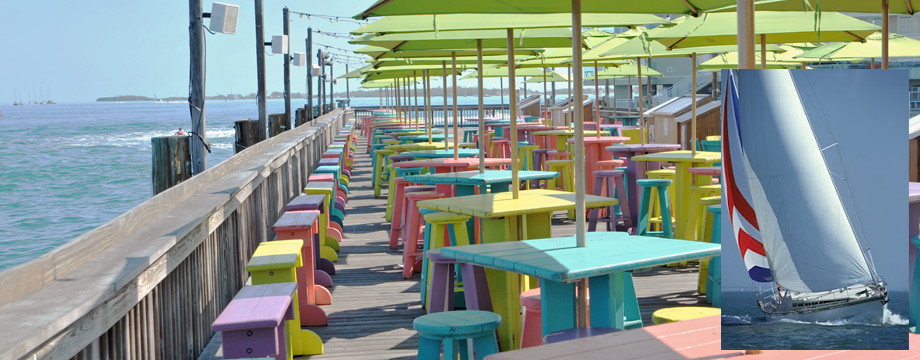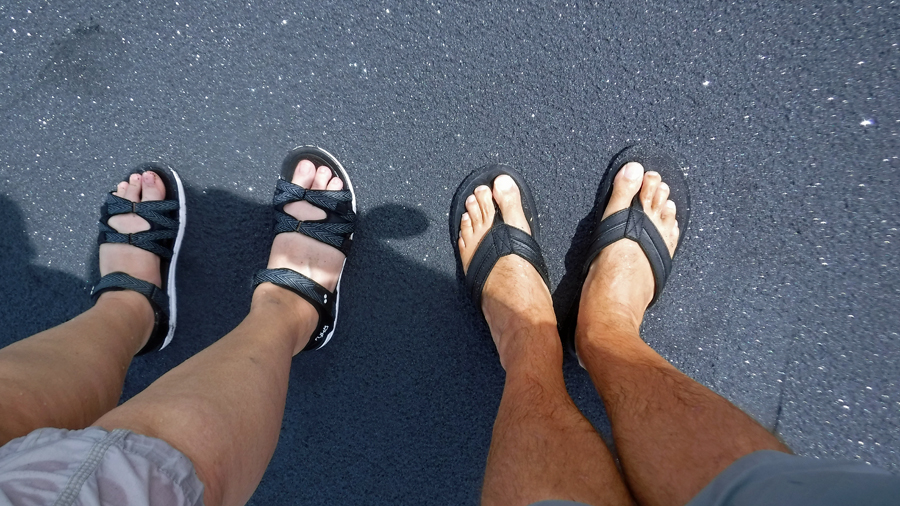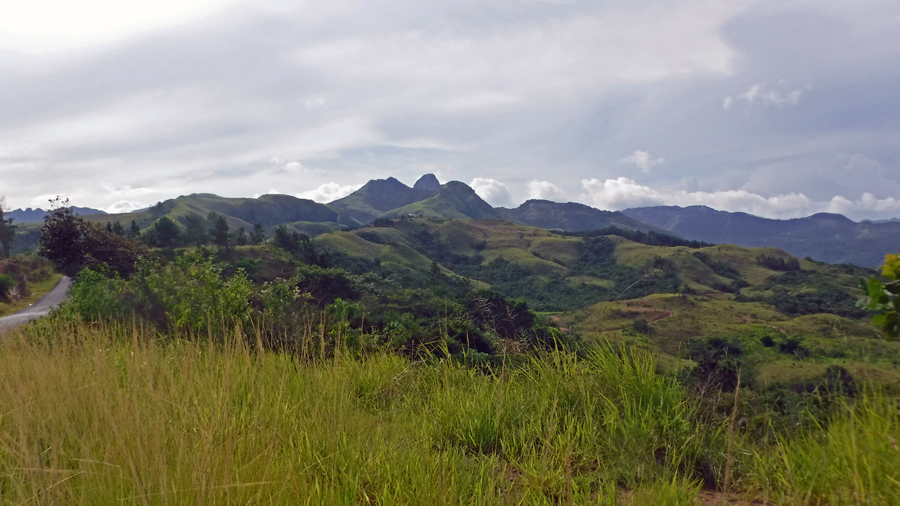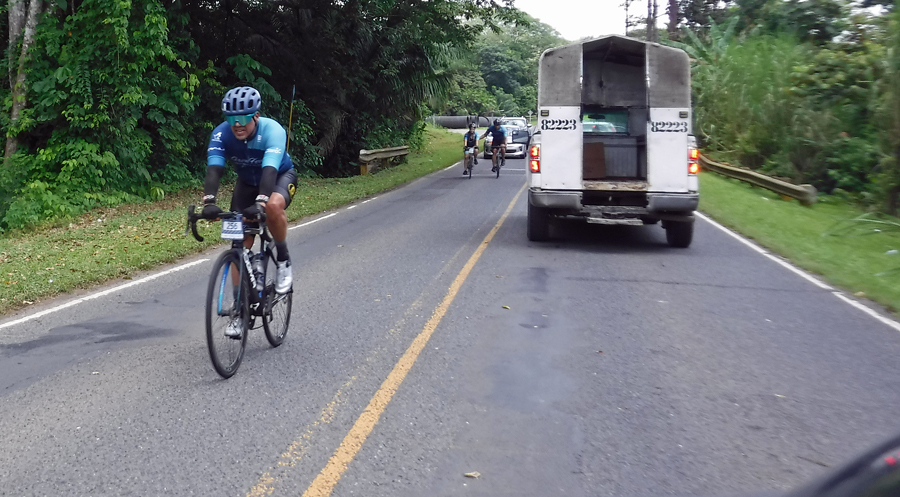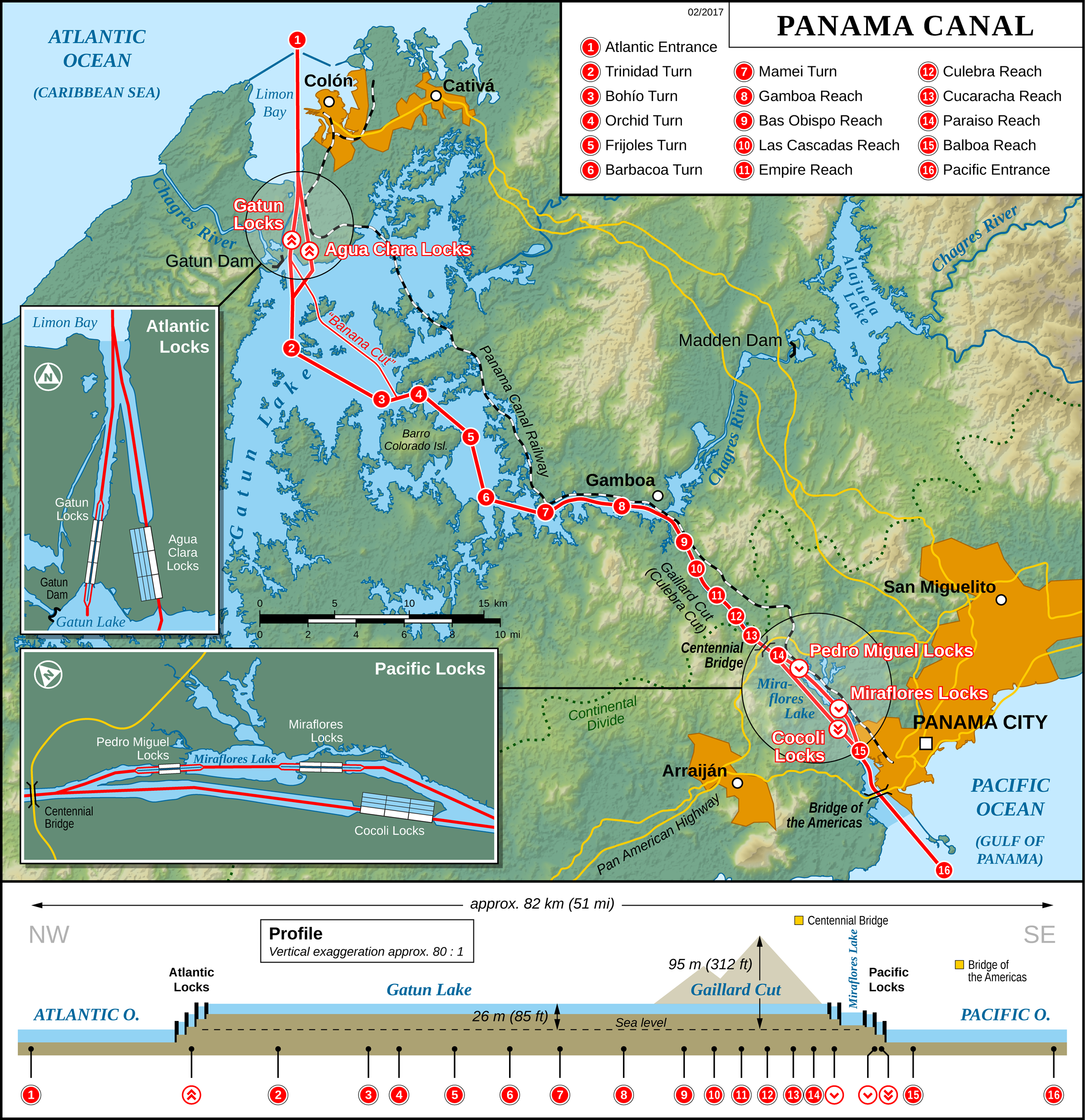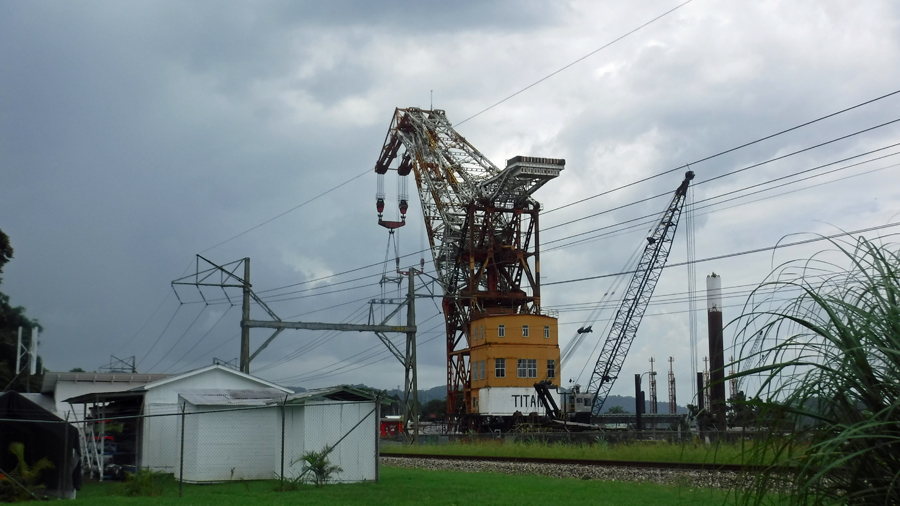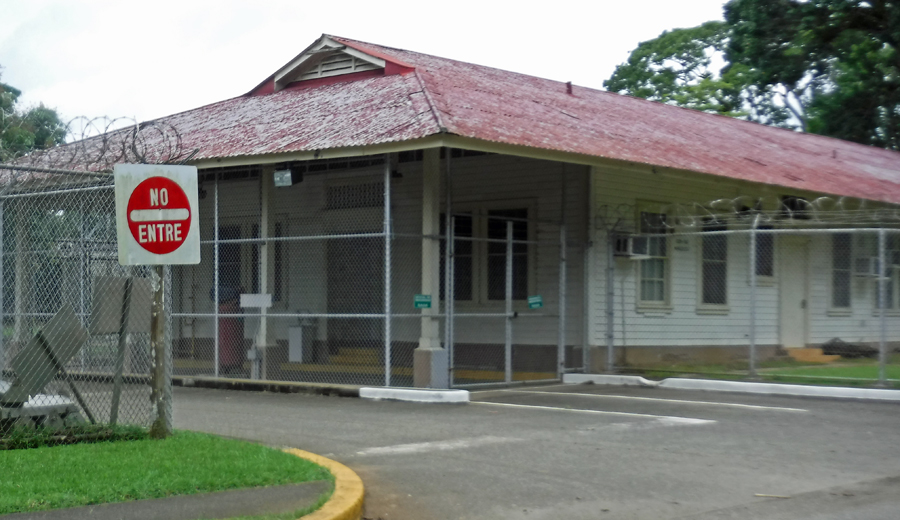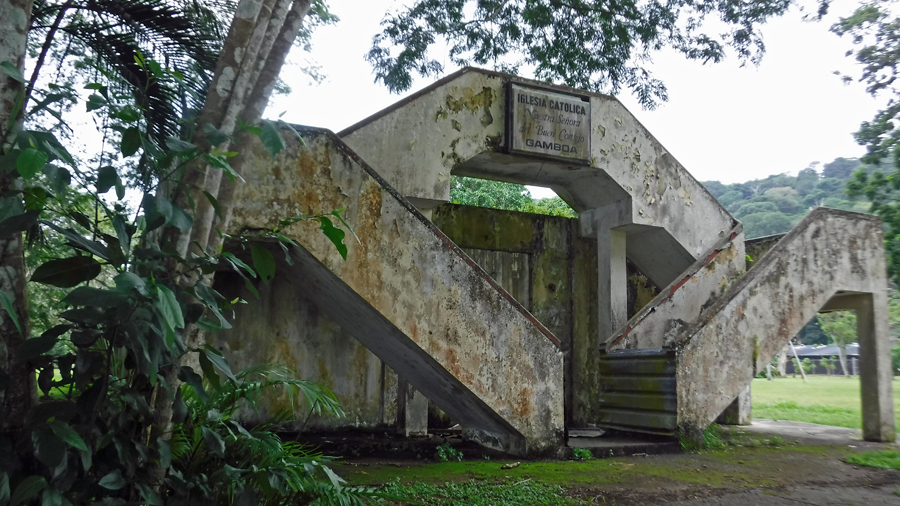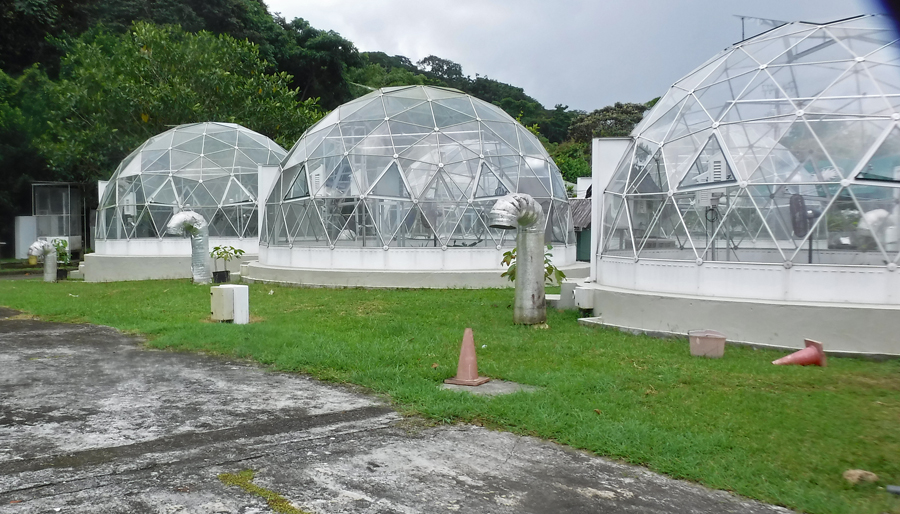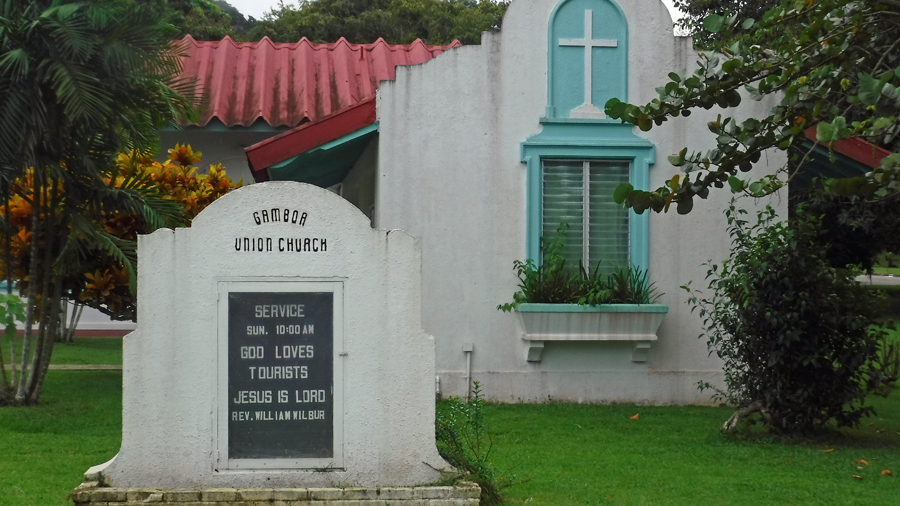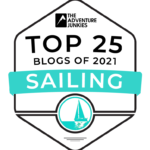It’s funny how sometimes even the best-laid plans go awry. And then, as if by magic, things work out and the day is one to remember.
The rain here in Panama has started to become a little more frequent as we progress deeper into the rainy season. Having to look at the weather for any outings is now required. We are fortunate the marina is located in an area of Panama the locals refer to as the blessed area. Meaning is doesn’t rain quite as much. This is due to the inland mountain pattern. We are in the cycle now of 2-hour heavy downpours each day. It rains really hard and then goes away. We have had a few days where it has rained all day and these are starting to occur more frequently. Earlier this week, we saw today was going to be nice and decided to spend our Sunday at the Aqua Clara Locks on the Panama Canal.
The Aqua Clara locks are the locks built as a part of the canal expansion that open in June 2016 allowing larger ships to transit. Located near the locks is a museum featuring the building process of the canal expansion and a restaurant where people can sit and watch the ship traffic. These destinations were on the plan but, we never made it.
We still have our rental car. We keep extending it. We rented a car from Avis for US$6.43 per day. Yes, you read that correctly. We rented a mid-size car for a two week period for US$90. Two weeks is the maximum rental at this rate. If we rent for a longer period, the daily rate increases. So, we rent for two weeks and then show up again at Avis to get another car at the same time we are required to turn this one in. As it works out, they just keep renting the same one back to us. Clunk! That’s the sound of the other shoe dropping. You knew there was going to be a catch, right? Nothing is US$6.43 per day. The catch is the insurance. It is a killer and is required by Panamanian law. Because we do not own a car, we have no auto insurance. We have to purchase the liability insurance from Avis. This is not too bad as it only adds US$84 to the total two-week bill. It is the collision insurance that is the gotcha. Fortunately, our Costco Visa credit card covers us. An absolutely awesome benefit of the card is world-wide primary car insurance for collision and damage up to fifty thousand dollars. All we have to do is charge the car rental to our Costco Visa card. We love Costco! Because we do not buy their insurance, Avis hits us with a $10,000 deposit on the car. I am actually good with this since the charge stays in pending mode and we are not required to pay it unless we wreck the car. If we do wreck it, then the card provided insurance pays so not to worry. Even with the added insurance, our total bill for a two-week rental is about US$180 plus about $30 in taxes. I’m pretty happy about that and we’ll try hard not to wreck it so we can get our deposit back.
It is really nice to have the luxury of popping into town to stop at the store or grab a bite to eat. We better not get used to it. There is going to become a point where we have to turn in the car back to Avis. We have been driving about Panama exploring the nook and crannies of this beautiful country. A couple of days ago, we decided to pop into town and dine at a local Mexican food restaurant, which has rapidly become our favorite. After lunch, pulling out of our parking space we had to drive off in the wrong direction due to traffic. Not a big deal. Let’s drive down the street and see what’s there. The road quickly became narrow and wound up the hills. Then about fifteen minutes later, there was a clearing and we were treated to this magnificent view at our turn-around point.
Back to the plans today that didn’t quite work out. Google maps routed us through the Soberanía National Park. The park is one of many surrounding the canal as Gatun Lake in the middle is freshwater and the water from this lake feeds the canal locks. The Panama Canal Authority has its own very advanced meteorology department as forecasting the levels of the lake is a huge requirement for safe ship transit. They must diligently predict the amount of rain and instruct the dam operator how much water to retain or let out. We have been on this two-lane “short-cut” road before through the park. Huge trees and lush vegetation line both sides and makes it dark. The rainwater from the park flows to the Chagres River and into Gatun Lake. As we drove down the road, we started to see a lot of bicyclists. And then, more and more. We found ourselves in the middle of Tour de Panama and a traffic jam.
About halfway through the massive park and eco-area, is an intersection. We needed to go straight. A cop there was making everyone either turnaround or turn left toward Gamboa. I rolled down the window as we approach the cop and pointed down the road while saying, “Colón”. Colón is the direction we wanted to go once we got to Rte 9. I know I have said this before but, people here are friendly and polite. The cop, who has been standing in the unbearable heat telling stupid drivers like me to turn around smiled. He said something in Spanish. Since I still do not understand Spanish, he may have well said, “There have been nuclear attack and the entire world is now destroyed. This is the only part of the planet left and we are all going to die soon from the coming radiation”. But I’m pretty sure, even with my minimal grasp of the Spanish language, that’s not what he said. I think he told me the same thing he had to tell the hundreds of other drivers in front of us all morning long, “Turn left or turnaround”. We turned left toward Gamboa. Turning around at this point would have added extra 2 hours to our trip to the Aqua Clara Locks, according to the Google map machine. Cindy and I looked at each and both said, “I guess we’re going to Gamboa today, instead”.
Gamboa is a very small remote town with one road in and out. I guess one can say, Gamboa is located at the end of the road. It is now home to workers who maintain the dredging equipment for the canal. There are still a couple of massive dredging machines and a station for canal pilot boats and tugs. Titan is one of the larger floating cranes there and has an interesting history.
The population is sparse compared to Gamboa’s heyday. The town became very populated during the construction of the canal as this area is the Gaillard or Culebra Cut. The site where massive steam-powered machines dug the canal trench through a mountain range. Once open, with the USA running the canal, this area was a sort of military base. American military personnel arriving in Panama often had to wait in Gamboa for housing to open in another part of the American Zone. Then, in 1999 during the withdrawal of American troops from Panama, Gamboa became a bit of a ghost town. The crocodiles, caimans and iguanas have taken over. Many of the buildings there are now abandoned.
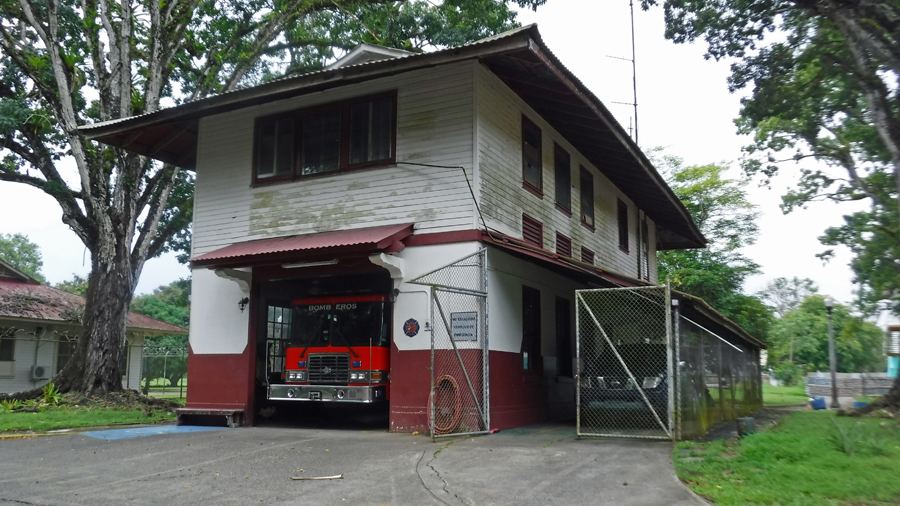
The fire station is a great example of the architectural style of Panama with the large eaves allowing the windows to be open during the rain
The end of the road in Gamboa ends in the rainforest. Where the road ends a trail called “the pipeline” begins. This is an extremely popular world-renowned birding area. The trail is in a relatively undisturbed rainforest. The rainforest exists undisturbed because of Panamas need for vast amounts of water, both to drink and for the canal. This is considered one of the best birding sights in Central America. Hundreds of species of birds are known to thrive here. Once a year amateur birdwatchers join ornithologists for yearly bird counts held by the Audubon Society of Panama.
Gamboa is also home to Renacer Prison. This is a small prison as prisons go and has a history of mainly being used to house political prisoners. During the 1983 to 1989 reign of Manuel Noriega, the prison had a large population of political prisoners, including some Americans. The year 1989 marks the USA Invasion of Panama, the capture of Manuel Noriega and the release of the political prisoners. It is the opinion of many; the military rule of Panama by Manuel Noriega was the fault of the USA due to Noriega close ties to the CIA. Panama now has an elected president and a very stable government.
On our way into Gamboa, we crossed the continental divide. This is the mid-point of the continent where theoretically if you straddle the line and pour a glass of water on one side, it will flow to the Caribbean Sea. If you pour on the other side, it will flow to the Pacific Ocean. Whenever I see a sign saying Continental Divide, I can’t help think of the really cute 1981 American romantic comedy film called Continental Divide starring John Belushi and Blair Brown. Movie trivia: It was the first film produced by Steven Spielberg’s production company Amblin Entertainment. Here’s another bit of movie trivia: In the movie, The Tailor of Panama the character played by Pierce Brosnan stays at the Gamboa Rainforest Resort, and has a meal at a waterside restaurant in Gamboa (this doesn’t actually exist and was a set). In the background of the opening shot of this sequence, you can see the iron and wood bridge that leads to Gamboa, with an ocean liner behind it.
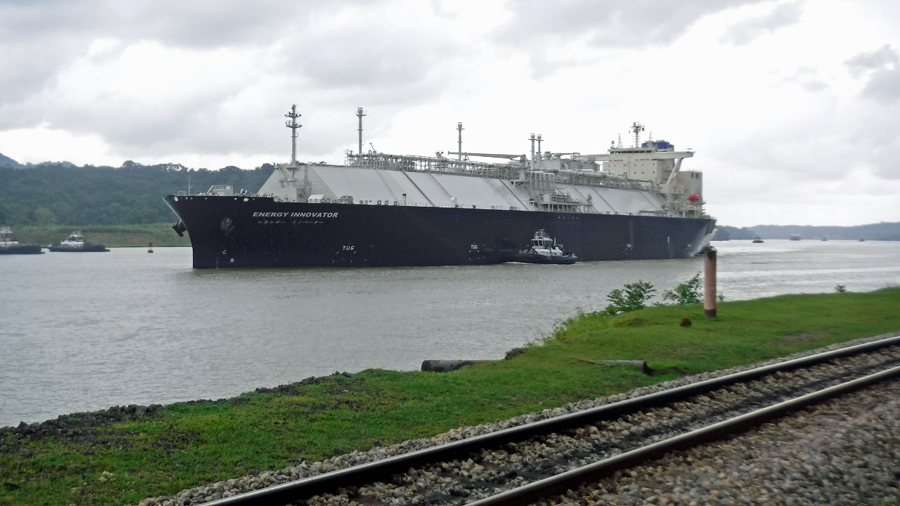
Gamboa allows tourists to get up close and personal with the traffic on the canal. The Panama Canal Transcontinental Railway is in the foreground
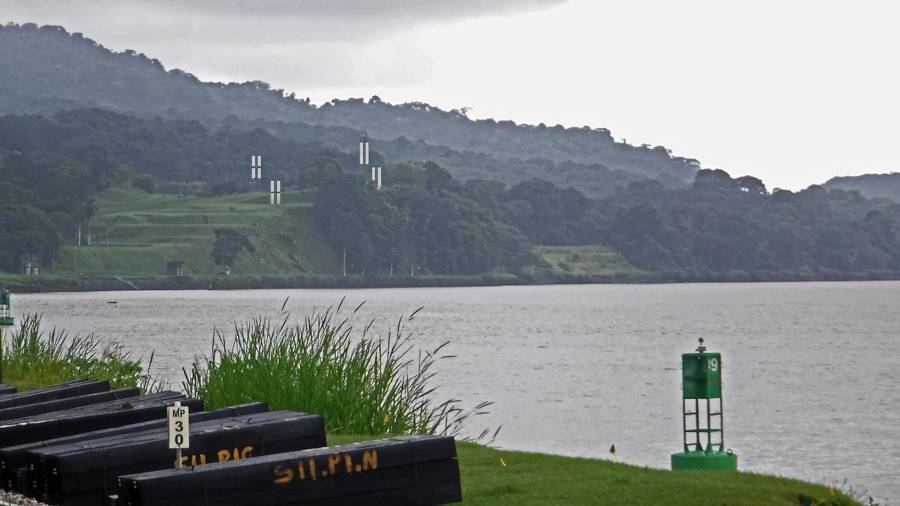
Range markers on the hillside are used to guide the ships. When the pilot sees the markers are aligned vertically, he knows he is in the middle of the channel
On the outskirts of Gamboa is an area that looks like something out of a Sci-Fi film. There are a lot of glass dome things. Did the Martians land in this remote area and nobody notice? Is it a new Stephen King novel setting? Being curious, I made sure I found a sign explaining what the heck it was I was looking at. It turns out it is a research facility for plants operated by the Smithsonian. The experimental greenhouses test tropical plant response to elevated carbon dioxide and temperatures to better understand the impacts of climate change. It is an interesting facility. Click here for more info.
So it turns out our day was a fun one. Days like this are a part of this lifestyle we both really enjoy. We love to explore areas off the beaten track and when the day takes an unexpected turn, all the better. We’ll save the trip to the Aqua Clara Locks for another time.
